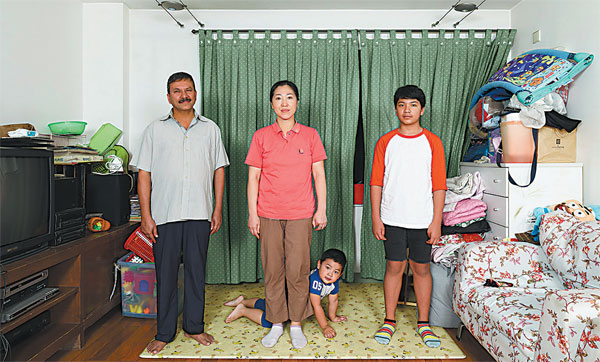Mixing in Beijing
Updated: 2015-03-27 11:38
By Pu Zhendong(China Daily USA)
|
||||||||
While Beijing is drawing increasing numbers of mixed-blood families brought by the influx of expatriates, the metropolis is also embracing an integrated culture featuring "mixed" layers of definitions on ethnicity, family and identity.
Ever since she has been partly based in the Chinese capital, starting in 2009, CYJO, an American visual artist, has shrewdly captured a growing cultural fusion dynamic similar to what she had encountered in New York, where she had lived for 15 years.
Today, more than 100,000 foreigners are believed to be living in Beijing. Some of those foreigners end up marrying Chinese nationals. Last year, the Beijing Civil Affairs Bureau said an average of 1,200 such couples register for marriage every year.
However, a Chinese person marrying a non-Chinese can still be considered unusual by people with traditional mindsets.
"I have been told by some locals that the prospect of having to encounter and iron out possible cultural differences being from different continents means that more work may need to be done to maintain the marriage," CYJO said. "However, this idea is changing especially in first-tiered cities."
CYJO's photographic and textual series Mixed Blood was conceived in such context.
Starting in 2010, CYJO has shot family portraits for 10 mixed-race families in Beijing and nine in New York. They are either from CYJO's own community or people she has met randomly or recommended by friends.
"Choosing Beijing has allowed some topics to come to surface, like the rapidly changing landscape of the city and culture, the cultural diversity within China's 56 ethnicities and the migration stories that stems from Chinese history," she said.
In each photograph, family members stand side by side with each other and occupy the majority of the frame against the background of their living space, surrounded by furniture and decorations that give away "different characteristic layers of the family".
"The project brought me into the homes of the families where their portrait was taken. The families defined themselves with their own stance, clothing and narratives," CYJO said.
Usually, father and mother are presented on the left side of the photograph followed by their children on the right side of the group. Each individual faces forward and looks into the camera lenses, meeting the gaze of the viewer.
The standing position, with feet firmly on ground and arms at the sides of their bodies, also produces a "striking uniformity". Noticeably, all family members keep certain space from each other without touching with the exception of some small kids.
"The space between the individuals suggest that the nature and boundaries of racial and ethnic identification are, incrementally, becoming more of a personal choice than a socially imposed condition in today's society," said Nik Apostolides, an independent curator and former associate director of the Smithsonian's National Portrait Gallery in Washington.
Moreover, among the 10 Beijing-based families, CYJO did not reinforce the stereotype of a White male and the Asian female paring by presenting only five such couples. Two families consist of Asian fathers and mothers of European descent while the remaining three couples are of both different Asian ancestries.
"In this way, Mixed Blood makes a distinct shift from previous representations of discourses on multi-racial couples and individuals," said Ashley Bruckbauer, a doctoral student in the Department of Art History at the University of North Carolina at Chapel Hill.
In CYJO's series, family members including some of the children were interviewed, where they expressed themselves on questions such as: "home" and "mixed blood" - what does this mean? Citizenship and ethnicity - how is it balanced within the individual and the collective identity? Traditional culture - how does it survive and evolve during modernization?
"What surfaced was their own definition of self and how they navigated and embraced multiple cultures and recognized them in their family units," CYJO said.
For example, the Chandola family in Beijing has Korean and Indian ethnicities, but their kids know Beijing as their home because they were born and raised here, with Mandarin as their native tongue.
"All cultures have something to offer. I will say to my family, 'this is good in America. You should learn this from Korea. You should learn this from China.' We belong to the common heritage of human kind," said Vinod Chandola, father of the family, during CYJO's interview.
Based on the answers, CYJO also summarized brief family profiles that tell their names, ages, professions, nationalities, languages and their feelings about life.
"In a post-modern context, identities are not just defined by what we read academically but also by personal experiences. These personal experiences in many cases help to shape definitions over time and allow us to grow and evolve," she said.
Although Beijing may not be as racially diverse as New York, CYJO said multi-ethnical families in this city boast of some distinct features that distinguish themselves from their US counterparts, for instance, the multi-lingual ability.
"Many children in the Beijing-based families were fluent in different languages. They were easily able to navigate through different languages with their siblings, parents and community, whereas, the children from the New York-based families were not as fluent," she said.
Today, being "mixed blood" does not have to bear tragic historic backgrounds, and the once discriminatory polices have also been largely abolished in many countries, but the battle for ethnic equality is far from over.
Maya Soetoro-Ng, an internationally known educator and multi-racial identity researcher with the University of Hawaii, said CYJO's portraits are not just about choosing or unifying race or ethnicity; they hint at tensions and at differences in the power of heritage.
"They have historical echoes and teach us about colonialization, inequality, oppression, forgiveness and the kind of powerful love that drives people to cross boundaries," said Soetoro-Ng, who is also half-sister of President Barack Obama.
Mixed Blood is currently on exhibit through early April at the Three Shadows Photography Art Center in Beijing. Last year, the series was also exhibited in Chengdu, Dalian and Shanghai.
Being an American with Korean ancestry, CYJO is also known for her KYOPO project (2004-09), a similar series that profiles over 200 individuals of Korean ethnicity, mainly Korean Americans, in an attempt to visualize the evolution of their interlayered identity and culture. Mixed Blood is actually a derivative of KYOPO.
CYJO's first major work in China also include Substructure (2010), a photographic, video and textual portrait series documenting internal migration through 50 Chinese migrants in Beijing, as well as the reality-based Moment, Moving Moments (2012) and Blue Sky Day (2010-ongoing).
While offering that Mixed Blood is a continuing project to be exhibited in many other cities, CYJO said she has been working on a few other projects that "follow the same lineage, which investigates the notion of categorization within our global context".
"Perhaps the families will allow us to focus on the connective qualities within people, the humanistic aspect, where both similarities and differences can be celebrated," she added.
puzhendong@chinadaily.com.cn
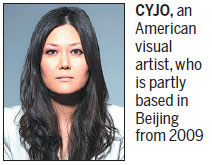
|
The portrait of the Chandola family in Beijing, by CYJO. The artist has shot family portraits for 10 mixed-race families in Beijing and nine in New York since 2010. Provided to China Daily |
(China Daily USA 03/27/2015 page10)
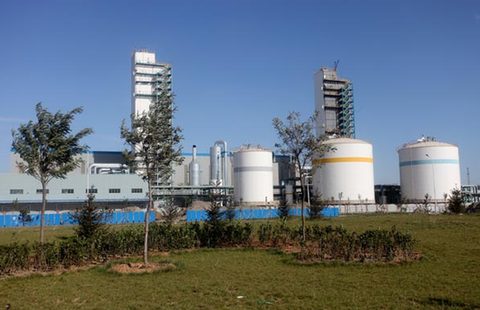
 Top 10 steel producers in China
Top 10 steel producers in China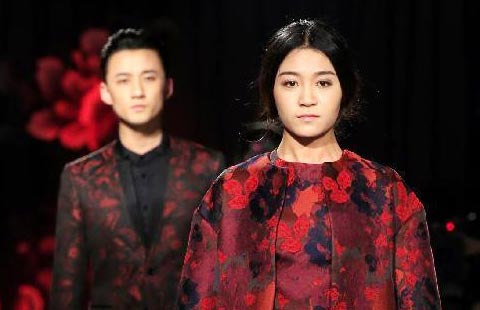
 Highlights of China Fashion Week
Highlights of China Fashion Week Cockpit mystery emerges
Cockpit mystery emerges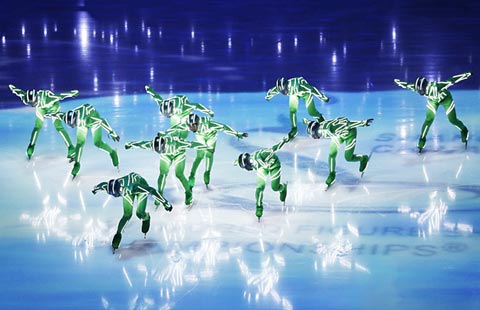
 ISU figure skating worlds opens in Shanghai
ISU figure skating worlds opens in Shanghai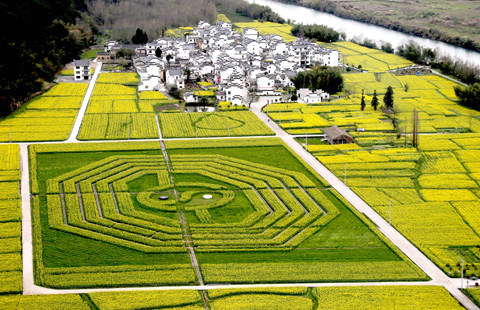
 Canola flowers form the emblem of harmony
Canola flowers form the emblem of harmony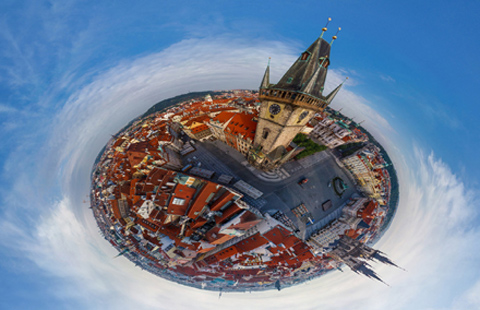
 Your city in the shape of tiny round planet
Your city in the shape of tiny round planet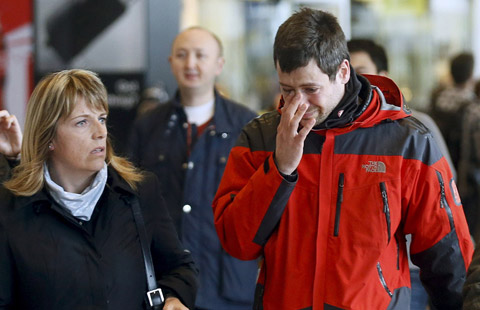
 Families mourn victims of Airbus A320 crash
Families mourn victims of Airbus A320 crash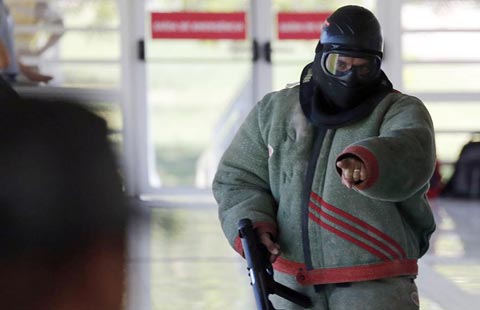
 38,000 Brazilian troops to safeguard 2016 Rio Olympics
38,000 Brazilian troops to safeguard 2016 Rio Olympics
Most Viewed
Editor's Picks

|

|

|

|

|

|
Today's Top News
Apple Pay would face battle in China: Analysts
Michigan firm gets $1 billion Chinese contract
Teen's DNA project nets student Intel science award
China, US bear down on fugitives, 'Sky Net' unleashed
Analysts: US urged to not politicize bank
Germanwings' co-pilot 100 percent fit to fly: Lufthansa CEO
Yuan backed on Silk Road
RMB hub makes a splash
US Weekly

|

|
